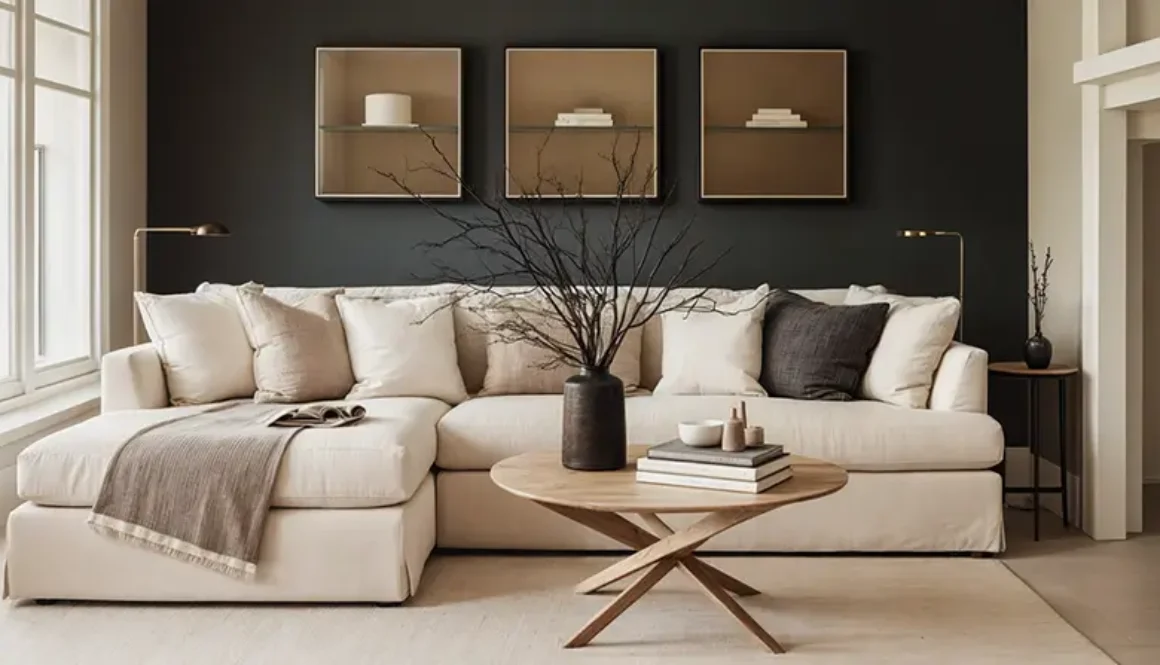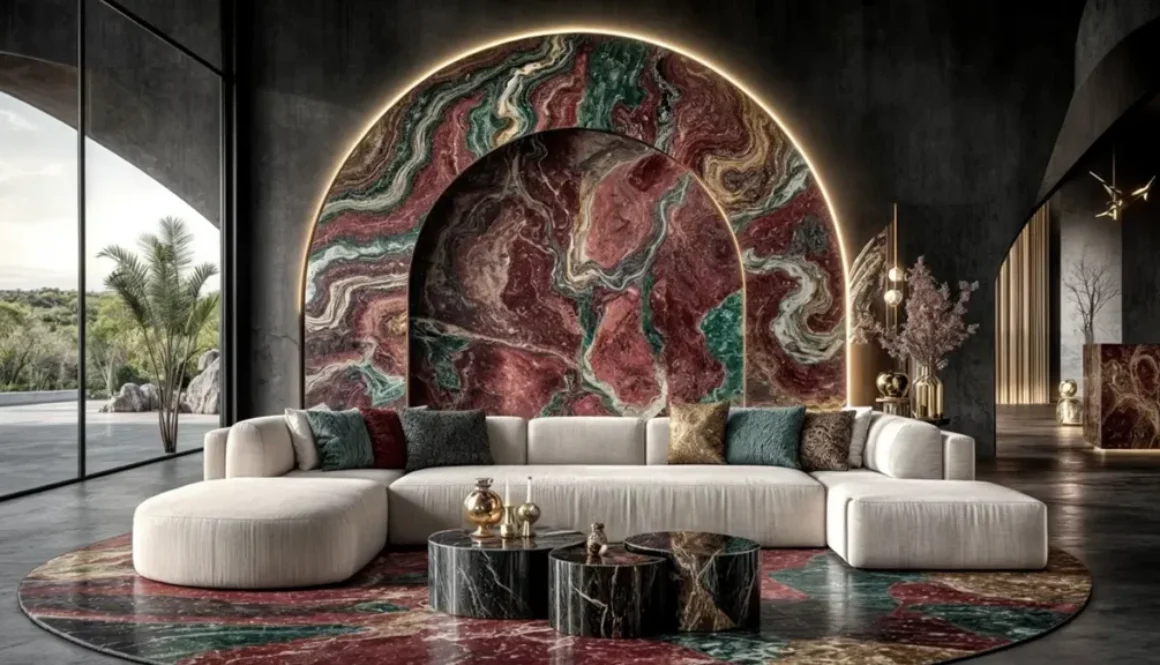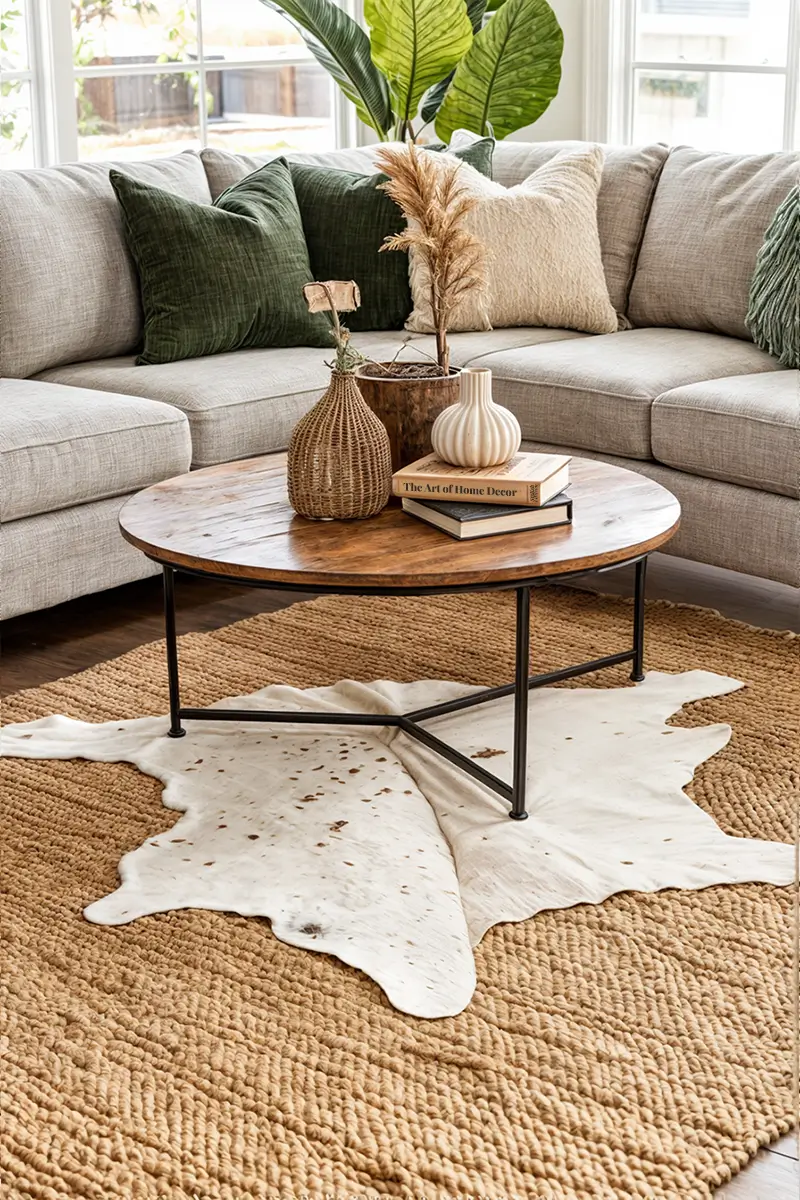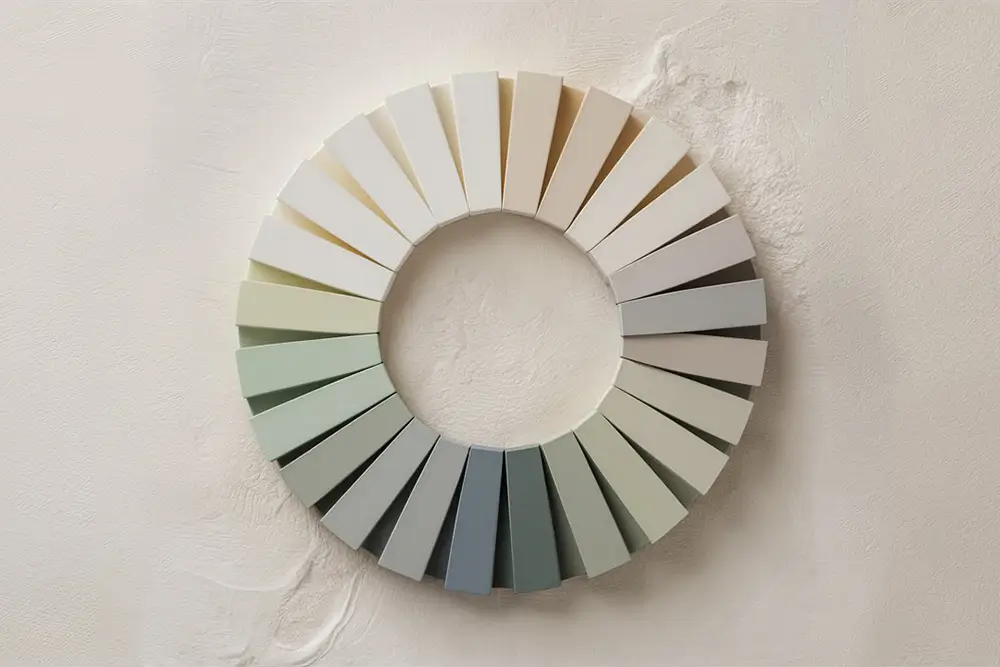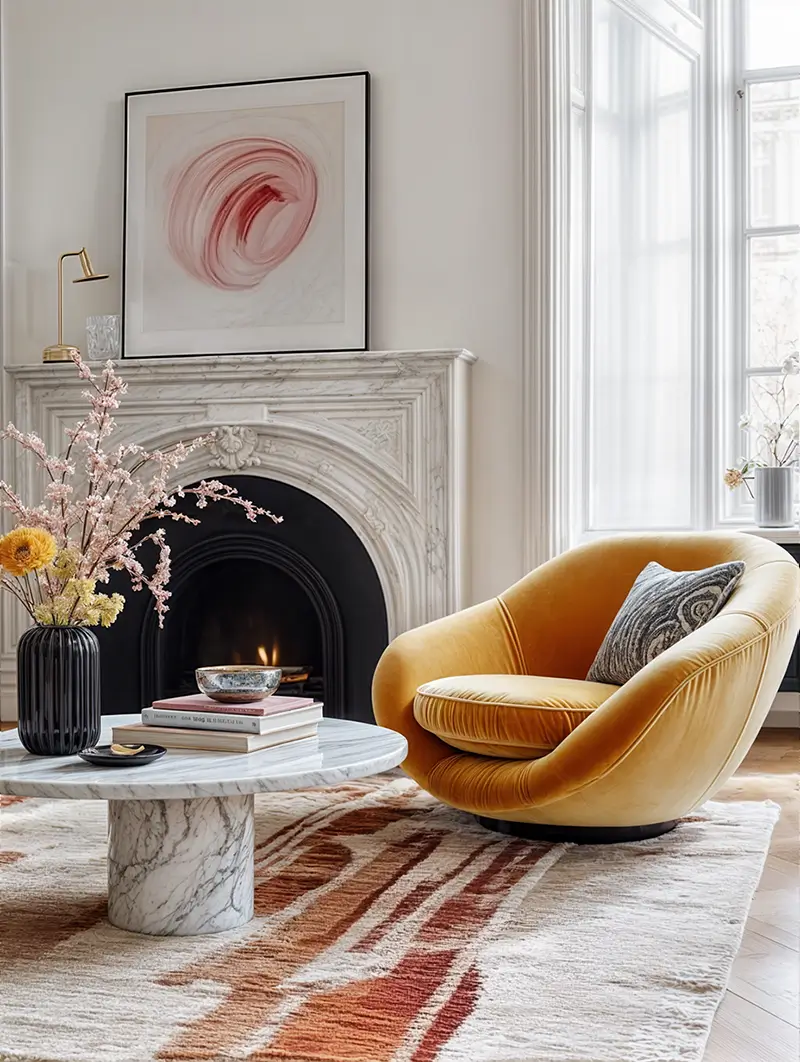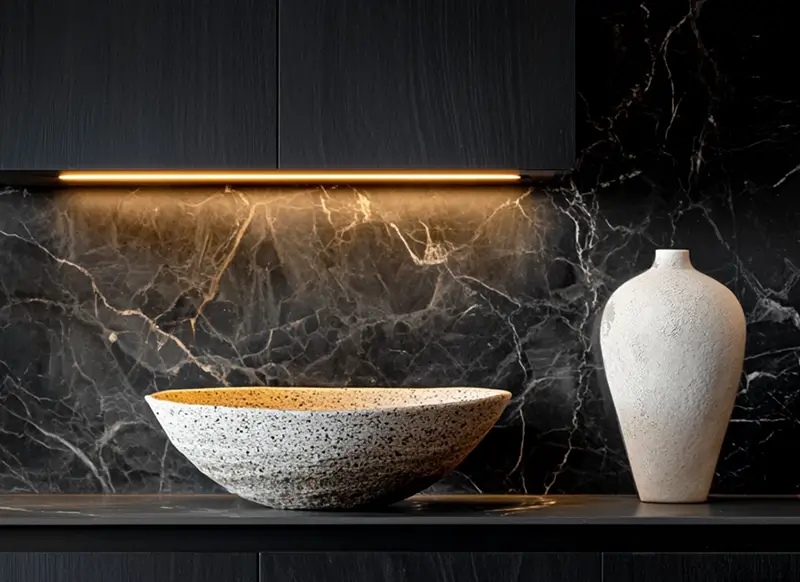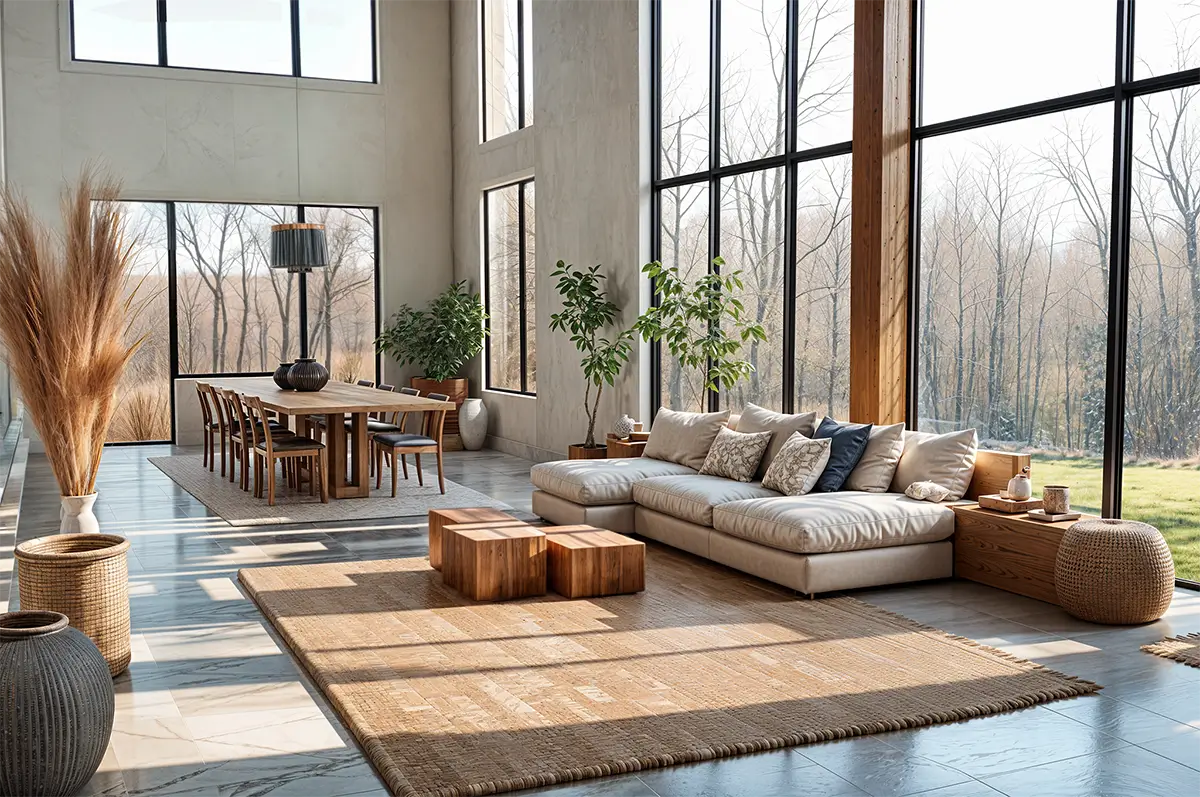Beyond White Walls: A New Take on Minimalist Luxury Living Rooms
Imagine stepping into a living room where minimalism exceeds the expected. No stark white boxes. No clinical emptiness. Instead, chosen elements create an atmosphere of refined luxury. This is the new face of minimalist luxury living room design – less becomes more through thoughtful curation.
Table of Contents
The New Rules of Minimalist Luxury Living Room Aesthetics
Breaking Away from Traditional Minimalist Design
The old rules of minimalist design often felt like a list of restrictions:
White walls, sparse furnishings, and an almost austere approach to decor.
Today’s minimalist luxury interiors challenge these constraints.
Modern minimalism includes:
- Depth through texture,
- Carefully chosen color palettes, and
- Elements that add personality without compromising the clean aesthetic.
The minimalist luxury approach creates spaces where every element serves a purpose, quality wins over quantity, and your home radiates a sense of thoughtful elegance that reflects your personal style.
Finding the Balance Between Minimalism and Opulence
Minimalist luxury is about finding that sweet spot between Minimalism and opulence.
This magic happens when you choose fewer things of exceptional quality instead of filling your space with so-so pieces.
The key is intentionality.
Each element in your living room should serve either a functional purpose or an aesthetic one—ideally both.
This approach creates breathing room for your most treasured possessions to make their statement.
A space that successfully balances minimalism with luxury feels complete without feeling crowded. It speaks of confidence rather than showing off.
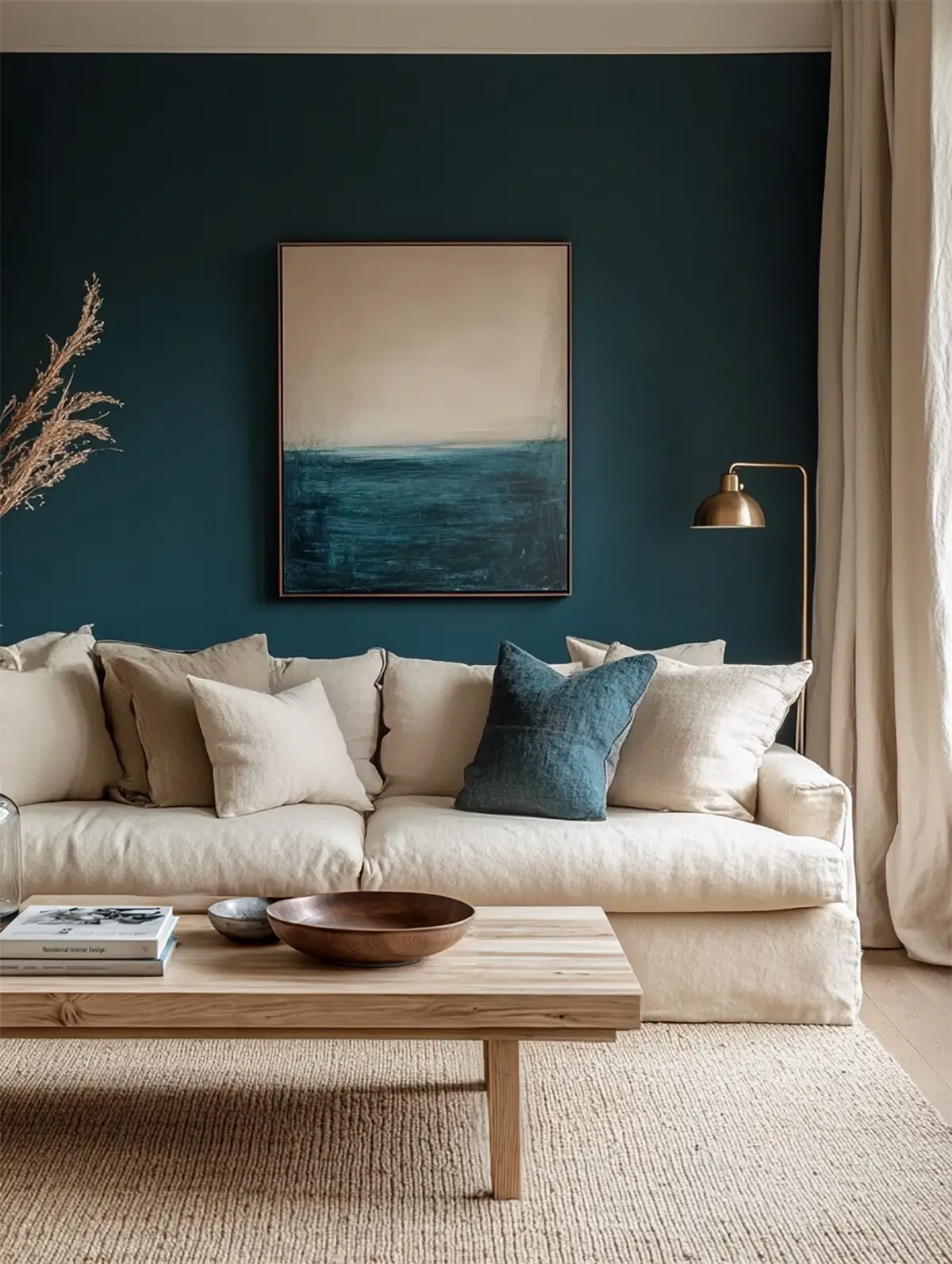
The Quality-Over-Quantity Approach to Luxury Spaces
The cornerstone of minimalist luxury interior design is investing in high-quality materials and pieces that will stand the test of time, both in durability and design.
This approach may require patience—collecting exceptional items gradually rather than furnishing an entire room at once with less remarkable pieces.
What makes something “quality” in minimalist luxury?
Look for:
- Exceptional craftsmanship with visible attention to detail
- Natural materials that age beautifully (solid woods, natural stones, quality leathers)
- Timeless design that transcends passing trends
- Functionality that enhances rather than complicates daily life
When working with clients, I often recommend investing most significantly in the sofa, a primary chair, and lighting—elements that form the backbone of the living room experience.
Creating Breathable Design Through Negative Space
Perhaps the most overlooked element in luxury design is what’s not there. Negative space—the empty areas between objects—is what allows a room to “breathe” and each piece to be appreciated fully.
Negative space works like the pauses in a great conversation—without them, even the most brilliant thoughts get lost. Your beautiful furniture needs these breathing moments to really shine.
In practice, this means:
- Allowing space between furniture pieces rather than pushing everything against walls
- Keeping some surfaces entirely clear
- Resisting the urge to fill empty corners
- Creating circulation paths that flow naturally through the room
A room with proper negative space feels expansive regardless of its actual dimensions. The luxury lies in having space that enhances what surrounds it.
Why Minimalist Design Style Works for Various Home Sizes
One of minimalist luxury’s greatest strengths is its adaptability to any space.
Whether working with a compact urban apartment or a sprawling estate, the principles remain effective.
In smaller spaces, minimalist luxury prevents the cramped feeling that comes from overdecorating. Each piece can be fully appreciated, and the room feels purposeful rather than compromised.
In larger rooms, minimalist design prevents the cold, empty feeling that can plague big spaces.
By selecting pieces with presence and arranging them with intention, even vast rooms feel intimate and cohesive.
Regardless of size, minimalist luxury design creates a sense of intentionality that elevates any living room from ordinary to exceptional.
*Stay current by exploring minimalist design trends that emphasize these features.
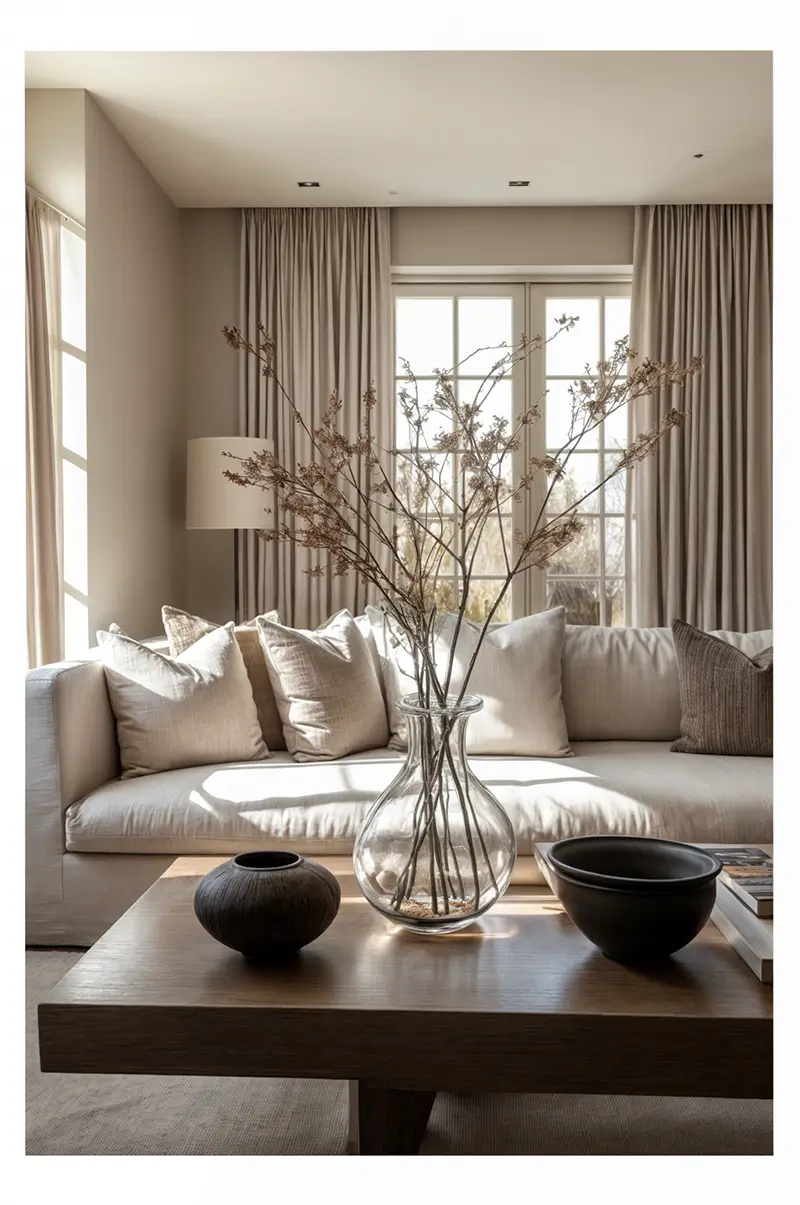
Curating the Perfect Color Palette for Minimalist Elegance
Sophisticated Neutrals That Elevate Your Space
Neutral color palettes form the foundation of minimalist luxury living rooms, but the right neutrals are anything but boring. The trick is selecting sophisticated neutrals with depth and character rather than flat, one-dimensional colors.
This approach, often called warm minimalism, prevents spaces from feeling cold or impersonal.
Look for:
- Warm whites with subtle undertones that shift throughout the day
- Complex grays that reveal hints of blue, green, or purple depending on the light
- Soft greens for that calming minimalist living room effect
- Rich taupes that bridge the gap between gray and brown
- Sophisticated charcoals that offer depth without the starkness of pure black
Apply these neutrals in varying proportions—perhaps 60% to your dominant color, 30% to your secondary color, and 10% to your accent. This creates a layered, sophisticated feeling that flat colorways cannot achieve.
Warm Minimalist Color Palette Guide
| Category | Paint Color | Brand | Description |
|---|---|---|---|
| Warm Whites and Creams | Soft Chamois (OC-13) | Benjamin Moore | Soft, creamy white |
| Simply White (OC-117) | Benjamin Moore | Versatile, warm white | |
| Beige and Oatmeal Tones | Sand Dunes (1072) | Benjamin Moore | Warm, beige tone |
| Warm Sand (CSP-280) | Benjamin Moore | Cozy feel with its warm beige color | |
| Earthy Browns | Cavern Clay (SW7701) | Sherwin-Williams | Warm, earthy brown |
| Elephant’s Breath | Farrow & Ball | Muted, earthy red-brown | |
| Terracotta and Warm Reds | Rookwood Terra Cotta (SW2803) | Sherwin-Williams | Warm, terracotta hue |
| Dark Cherry Mocha (S170-7) | Behr | Warm, earthy red-brown color |
Strategic Use of Muted Tones for Depth and Drama
Beyond pure neutrals, minimalist luxury often incorporates muted versions of colors—tones that have been softened with gray undertones. These colors create depth without overwhelming the serene atmosphere.
Consider:
- Dusty blues that feel like neutrals but add dimension
- Muted sages that bring nature’s tranquility indoors
- Soft terracottas that add warmth without brightness
- Deepened navy that reads almost as a neutral but adds sophistication
These muted tones work best when used strategically—perhaps on a signature chair, through artwork, or even on a statement wall when appropriate.
Incorporating One Accent Color for Visual Cohesion
While restraint governs the minimalist luxury palette, one carefully chosen accent color can bring the space to life. This accent is most effective when it appears in small doses throughout the room, creating a thread that ties the design together.
Your accent might appear in:
- A single striking artwork
- Carefully selected decorative objects
- A small upholstered piece
- Natural elements like flowers or plants
A design secret? Be consistent with your accent color—use that same tone at least three times around the room. This creates an intentional look rather than something that feels random or accidental.
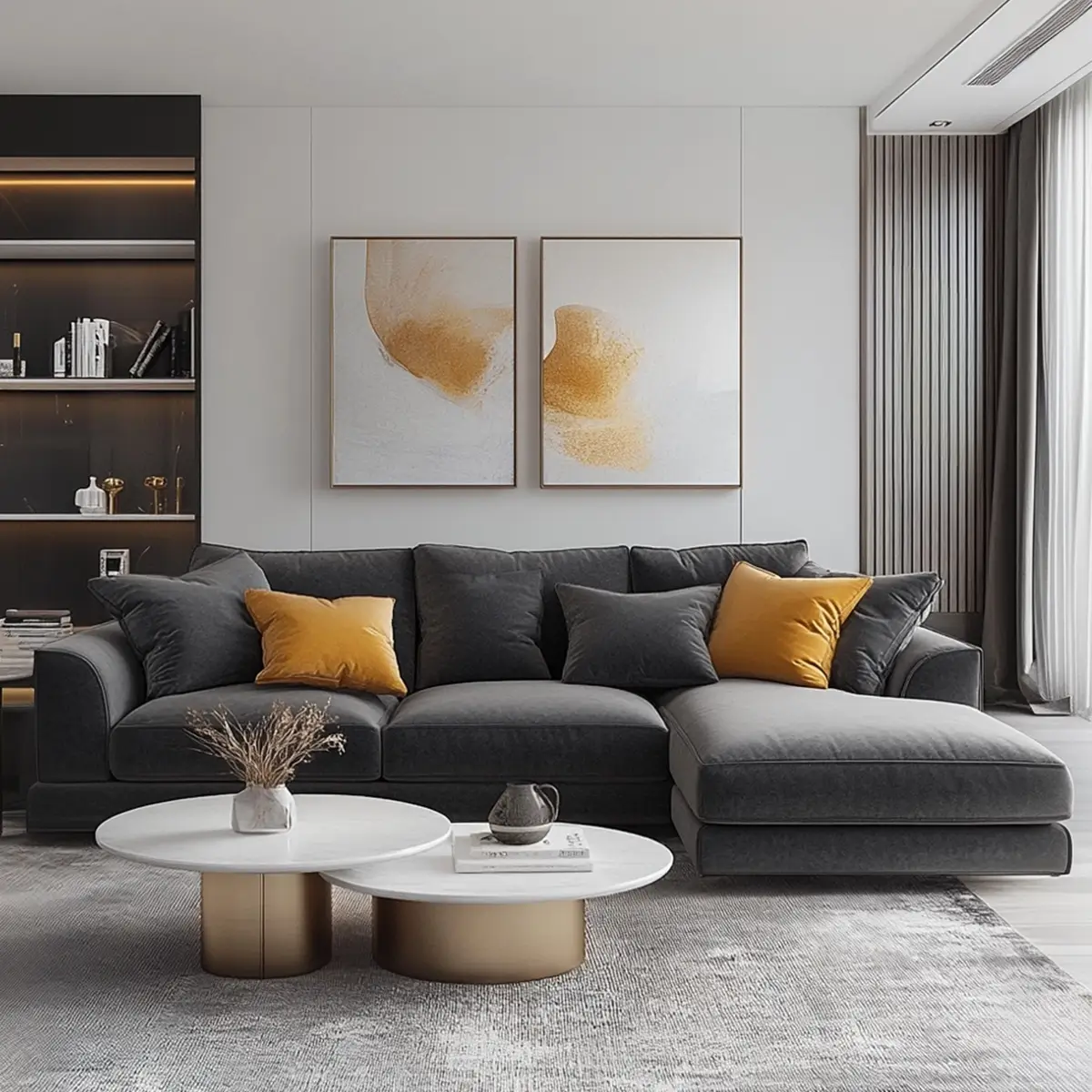
Creating Depth Through Tonal Variations
The most sophisticated minimalist palettes employ tonal variations—different shades of the same color—to create visual interest without introducing new colors.
This approach might mean:
- Using three different but related shades of beige
- Incorporating texture that creates natural shadow and highlight in a single color
- Selecting slightly different tones within the same color family for adjacent elements
This tonal approach creates a richness that flat, one-dimensional color schemes lack, all while maintaining the clean, cohesive feel that minimalist luxury demands.
Statement Furniture as Design Elements in Minimalist Spaces
Creating a Focal Point With One Remarkable Piece
In minimalist luxury, one extraordinary piece often serves as the room’s anchor and conversation starter. This statement piece earns its prominence through exceptional design, unusual form, or extraordinary craftsmanship.
This could be:
- A sculptural sofa with unexpected lines
- An architecturally significant chair
- A remarkable coffee table in an unexpected material
- A vintage piece with historical significance
The key is allowing this piece room to breathe. A statement piece surrounded by too many competing elements loses its impact. Give your focal point space to be appreciated, and keep surrounding elements more subdued.
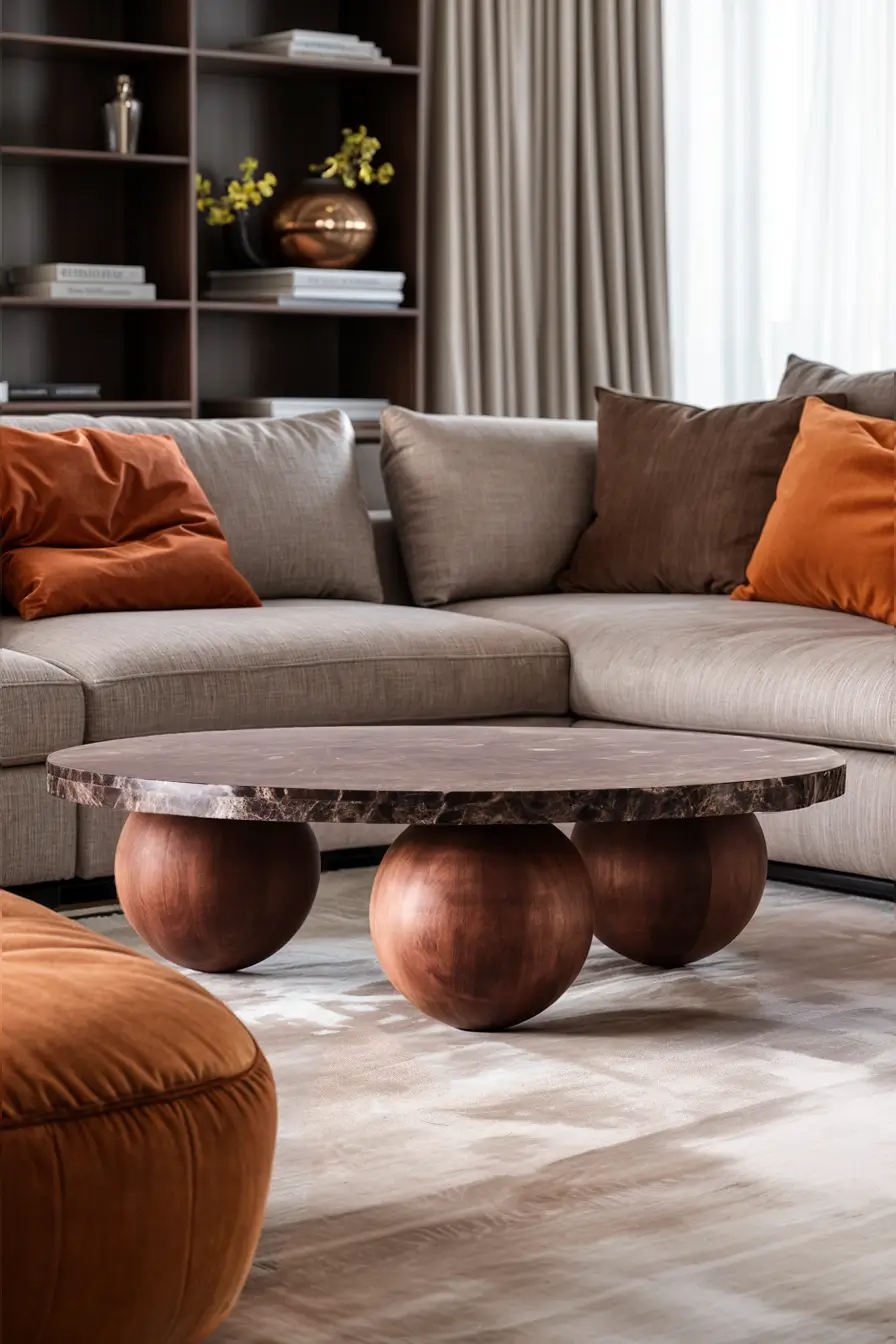
Choosing Furniture With Architectural Lines
Furniture in minimalist luxury spaces often features clean, architectural lines that create visual interest without ornate details. These pieces feel almost like sculptures in their own right.
Look for:
- Clear geometric influences
- Intentional proportions
- Thoughtful silhouettes that create interesting shadows
- A sense of balance even in asymmetrical designs
Furniture with architectural presence holds attention despite simplicity. These pieces don’t need embellishment—their power comes from form, proportion, and precision.
Luxury Finishes That Transform Simple Pieces
In minimalist design, materials and finishes do much of the heavy lifting. Even simple forms become extraordinary when executed in exceptional materials.
Consider:
- Honed marble with visible natural veining
- Full-grain leather that will develop a patina over time
- Solid woods with distinctive grain patterns
- Brushed metals with subtle texture
- Natural stone with character and depth
These materials bring warmth, tactile interest, and a sense of authenticity that manufactured or imitation materials cannot match. They tell a story of origin and craftsmanship that enriches the minimalist luxury experience.
*For more inspiration, check out our luxury living room ideas.
Materials Comparison Table for Minimalist Luxury
Pay Attention to Scale: Spacing Principles for Maximum Impact
Scale and proportion are perhaps the most crucial elements in minimalist luxury rooms. Even extraordinary pieces fail when their size is wrong for the space or when they’re improperly related to surrounding elements.
Key principles include:
- Allowing at least 18 inches between the sofa and coffee table
- Maintaining clear pathways of at least 30 inches throughout the room
- Selecting pieces proportional to the room’s dimensions
- Creating relationships between heights (coffee tables approximately 2/3 the height of sofa seats)
When the scale is correct, a room feels naturally balanced rather than contrived or uncomfortable. This sense of “rightness” is the hallmark of well-executed minimalist luxury.
Illumination as Art: Lighting in Minimalist Luxury Living Rooms
Statement Lighting as Sculptural Elements
In minimalist spaces, lighting fixtures become functional sculptures—art pieces that affect a room when illuminated and when simply present as objects.
Statement lighting might include:
- A dramatic pendant with architectural presence
- Sculptural floor lamps that create interesting shadows
- Unusual table lamps that serve as art pieces
- Wall sconces that create patterns of light against surfaces
These fixtures should complement rather than compete with your furniture focal point. If your statement piece is your sofa, perhaps your lighting is more subtle. If your furniture is understated, your lighting might become the room’s signature element.
The Three Layers of Ambient Lighting Essential for Luxury Spaces
Want to know what instantly separates amateur from professional spaces? Lighting! Skip the single overhead fixture and go for these three lighting layers:
- Ambient lighting provides overall illumination and sets the room’s base light level. This might come from recessed ceiling lights, a central fixture, or wall washers.
- Task lighting serves specific functions—reading lights, desk lamps, or under-cabinet lighting in adjacent spaces. These focused lights make the room functional.
- Accent lighting highlights architectural features, artwork, or decorative elements. These lights create depth, drama, and focus.
The ability to control these layers separately creates flexibility, allowing the room to transition from bright and energizing to intimate and relaxing.
Maximizing Natural Light Through Thoughtful Design
Natural light remains the most luxurious illumination source.
Minimalist design typically maximizes this resource through:
- Simple window treatments that don’t obstruct light flow
- Strategic mirror placement to reflect and amplify daylight
- Furniture arrangement that doesn’t block windows
- Glass or translucent elements that allow light to penetrate deeper into spaces
Here’s something I love pointing out to clients:
Watch how natural light transforms your space throughout the day. The right materials will look different (and beautiful) at morning, noon, and evening—it’s like having several rooms in one.
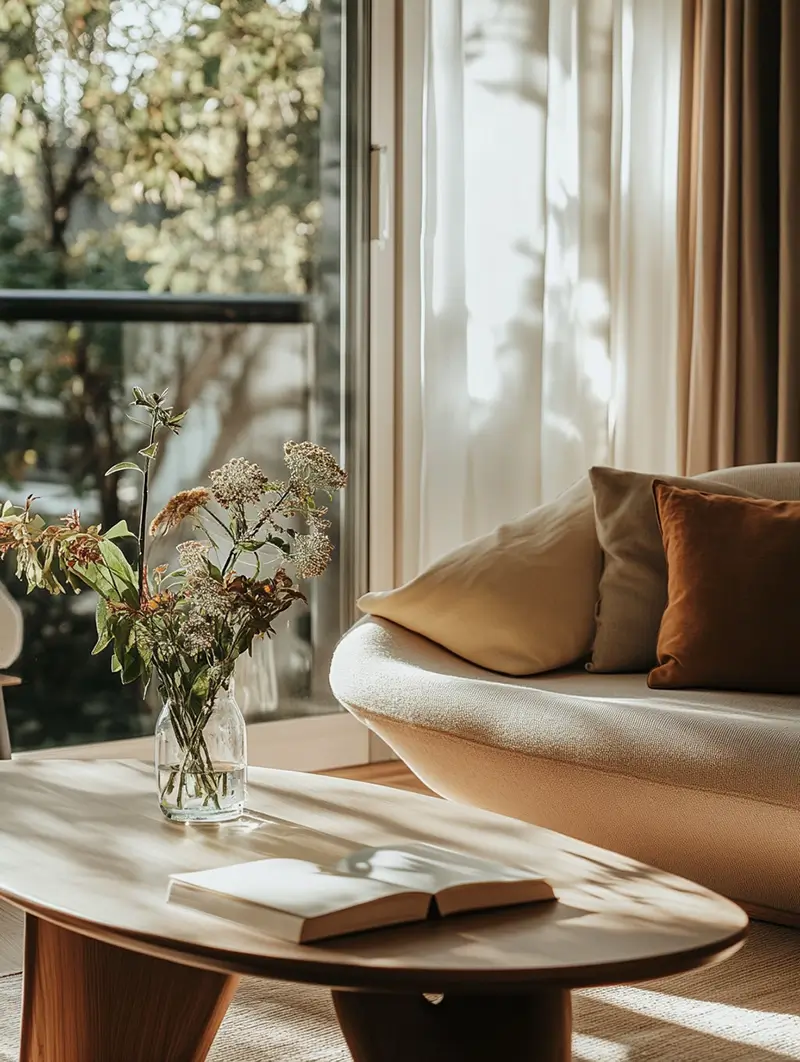
Creating Evening Ambiance Without Visual Clutter
Evening lighting transforms minimalist spaces from day to night. This transition requires thoughtful planning to maintain a clean aesthetic while creating warmth.
Consider:
- Dimmers on all fixtures for adjustable light levels
- Hidden LED strips that create gentle washes of light
- Small, rechargeable cordless lamps for flexibility without cables
- Candlelight for occasional use in strategic locations
The goal is to create warmth and intimacy without introducing the visual clutter of numerous visible fixtures and cords.
Thoughtful Minimalist Decor That Speaks Volumes
The “Rule of Three” for Surface Styling and Decor
Let me share a stylist’s secret weapon: the “rule of three.”
Limit your decorative groupings to just three items (maybe five for really big surfaces).
I use this trick all the time because it creates just enough visual interest without making your space feel busy.
This might mean:
- Three objects of varying heights on a console
- A stack of books, a sculptural object, and a small plant on a coffee table
- Three coordinated frames on a wall section
The power lies in the constraint. By limiting your selections, each piece gains importance and creates a more intentional impression than numerous smaller items would.
Curating Objects With Meaningful Stories
Here’s my number one rule for accessories:
In minimalist luxury, every object needs to earn its spot on your shelf or table.
The pieces that work hardest?
Those that tell a story—whether it’s personal, historical, or artistic.
Consider including:
- Pieces collected during travel
- Objects made by artisans using traditional techniques
- Items with family significance
- Limited edition art objects
- Natural specimens with unusual beauty
These stories create depth beyond visual appeal. When guests ask about an object, the narrative enriches their experience of your space because it reflects your personal story.
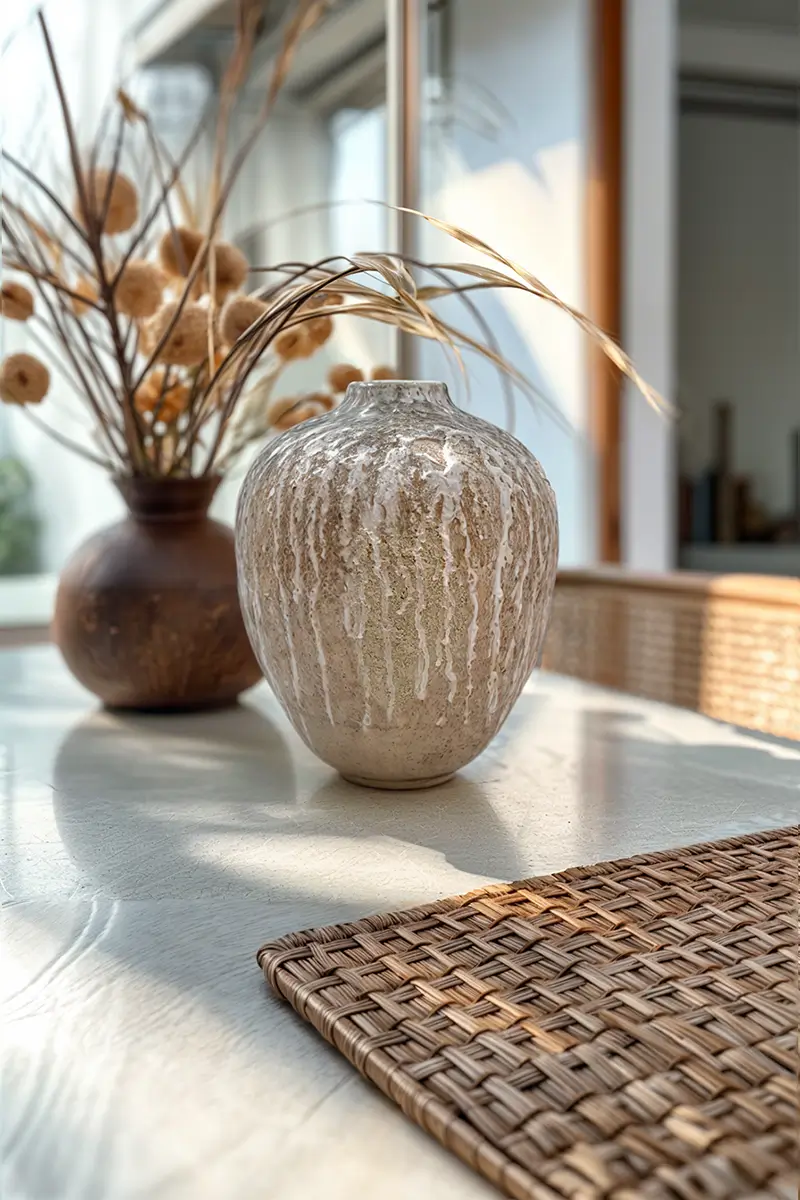
Luxury Textiles That Add Warmth Without Busyness
Textiles bring essential warmth to minimalist spaces, preventing them from feeling cold or sterile.
The minimalist luxury approach favors quality over quantity here as well.
Look for:
- Cashmere or wool throws in solid colors or subtle patterns
- Pillows in textural fabrics rather than busy prints (e.g. plush throw pillows)
- Natural fiber rugs with subtle variations
- Window treatments in materials that interact beautifully with light
The tactile quality of these textiles invites touch and creates comfort without visual noise. Their texture becomes a subtle design element in its own right.
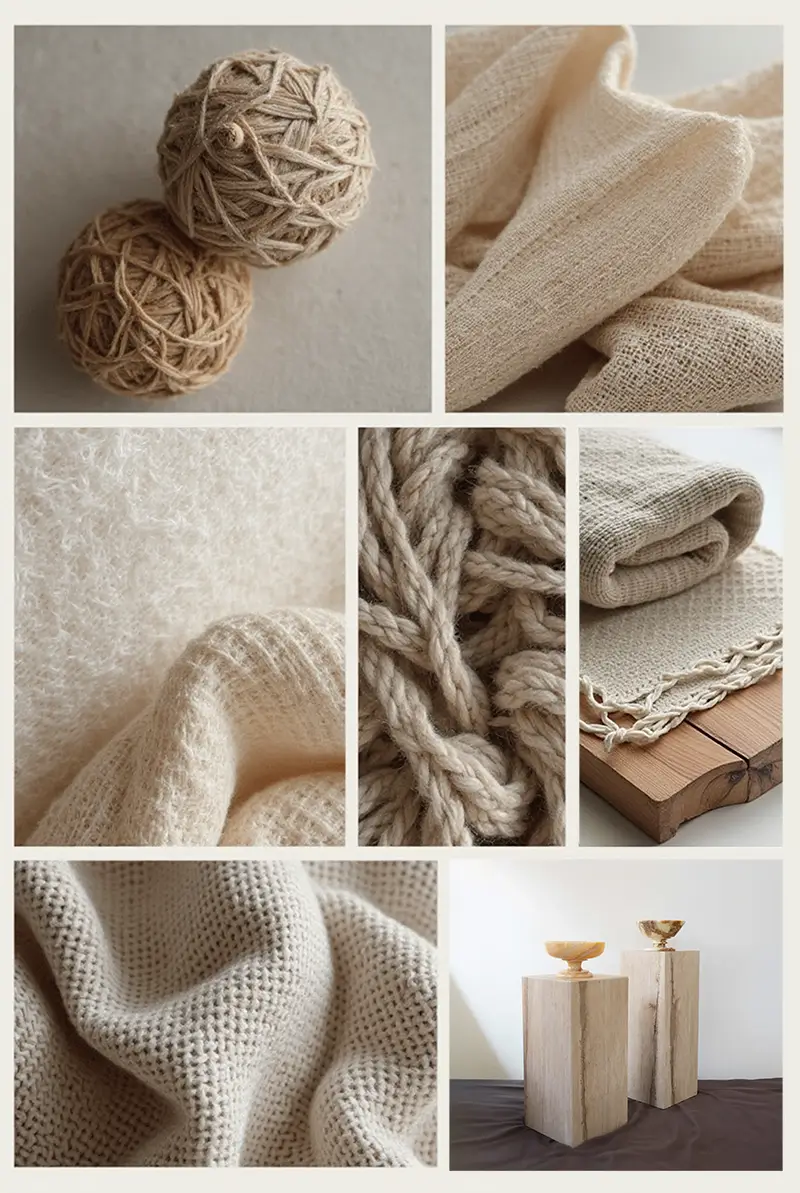
Organization Solutions That Maintain Minimalist Aesthetic
Effective storage remains essential in minimalist luxury spaces. Without it, minimalism quickly deteriorates into visible clutter.
The best minimalist storage:
- Disappears into architecture when possible (hidden cabinets, drawers integrated into built-ins)
- Serves multiple purposes (ottomans with storage, sofas with drawers)
- Becomes part of the aesthetic (beautiful boxes, architectural shelving)
- Remains rigorously edited (storing only what’s truly needed)
True luxury lies in having exactly what you need, exactly where you need it—without visual distraction from items not immediately in use.
Solutions for Common Challenges in Minimalist Design
Throughout our projects, we encountered challenges common to many minimalist transformations:
Challenge: Sentimental attachment to too many items
Solution: Create a rotation system for meaningful objects rather than displaying all simultaneously
Challenge: Fear of the space feeling cold or unwelcoming.
Solution: Use rich textures and warm materials while maintaining clean lines.
Challenge: Practical storage needs in a visually minimal space.
Solution: Custom built-ins that disappear into the architecture while providing ample concealed storage.
Challenge: Maintaining the minimalist aesthetic with active daily use.
Solution: Establish simple systems for daily organization that require minimal effort to maintain.
How to Maintain the Minimalist Luxury Ambiance Long-term
Minimalist luxury requires ongoing commitment. To help our clients maintain their new space, we established several practices:
- The one-in-one-out rule for new acquisitions
- Seasonal editing sessions to prevent gradual accumulation
- A dedicated “landing zone” near the entry to prevent daily items from migrating into the living space
- Regular rotation of art and decorative objects to maintain fresh interest without adding items
These practices ensure that the initial transformation doesn’t gradually revert to the previous state.
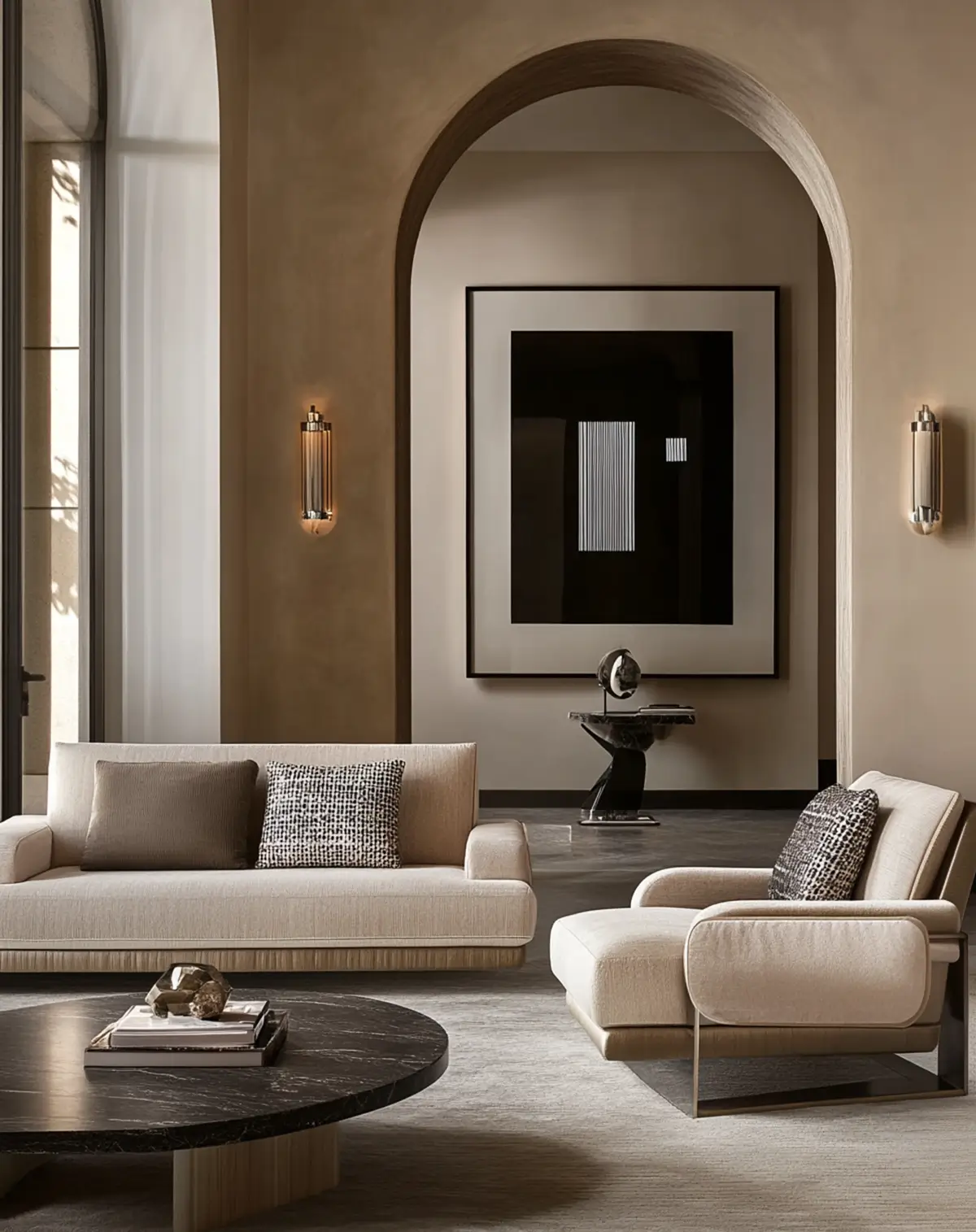
Minimalist Luxury Living Room: Final Thoughts
Creating a minimalist luxury living room goes way beyond making things look pretty—it completely changes how you feel in your home.
When you choose quality over quantity and thoughtful design over passing trends, you’re creating a space that actually makes everyday life better.
The best part?
This approach allows your personal style and luxury aesthetic to come through without any visual clutter getting in the way.
